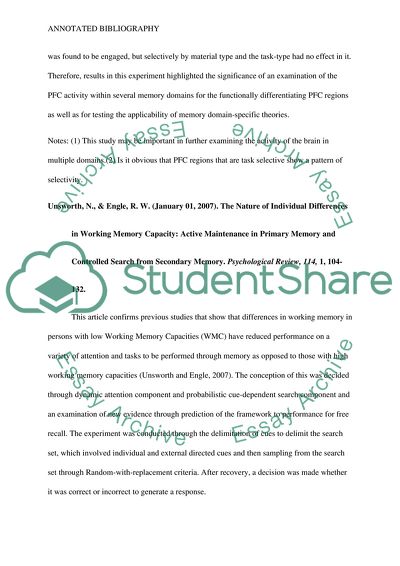Cite this document
(Memory and the Brain: Neural Basis of Attention Processes Annotated Bibliography Example | Topics and Well Written Essays - 1250 words, n.d.)
Memory and the Brain: Neural Basis of Attention Processes Annotated Bibliography Example | Topics and Well Written Essays - 1250 words. https://studentshare.org/psychology/1807814-annotated-bibliography-assignment
Memory and the Brain: Neural Basis of Attention Processes Annotated Bibliography Example | Topics and Well Written Essays - 1250 words. https://studentshare.org/psychology/1807814-annotated-bibliography-assignment
(Memory and the Brain: Neural Basis of Attention Processes Annotated Bibliography Example | Topics and Well Written Essays - 1250 Words)
Memory and the Brain: Neural Basis of Attention Processes Annotated Bibliography Example | Topics and Well Written Essays - 1250 Words. https://studentshare.org/psychology/1807814-annotated-bibliography-assignment.
Memory and the Brain: Neural Basis of Attention Processes Annotated Bibliography Example | Topics and Well Written Essays - 1250 Words. https://studentshare.org/psychology/1807814-annotated-bibliography-assignment.
“Memory and the Brain: Neural Basis of Attention Processes Annotated Bibliography Example | Topics and Well Written Essays - 1250 Words”. https://studentshare.org/psychology/1807814-annotated-bibliography-assignment.


